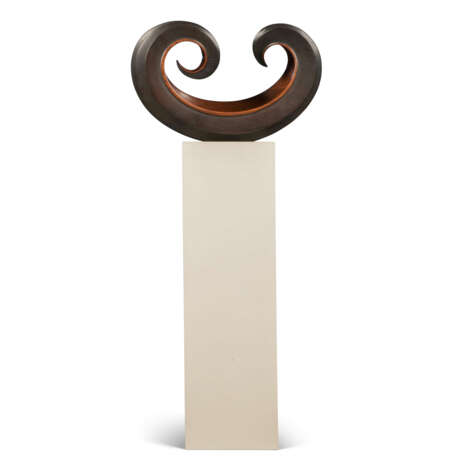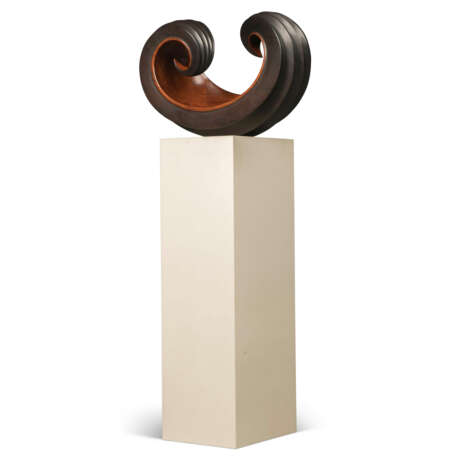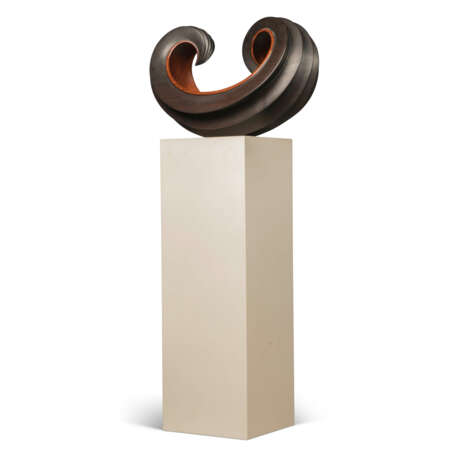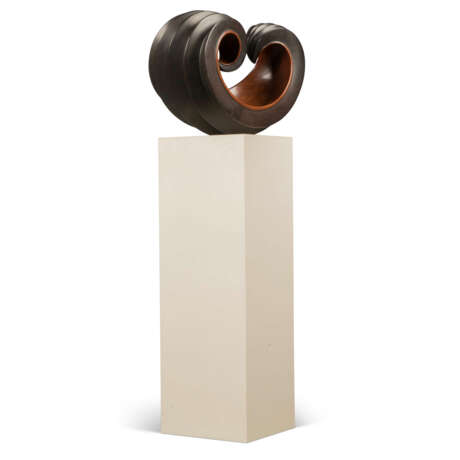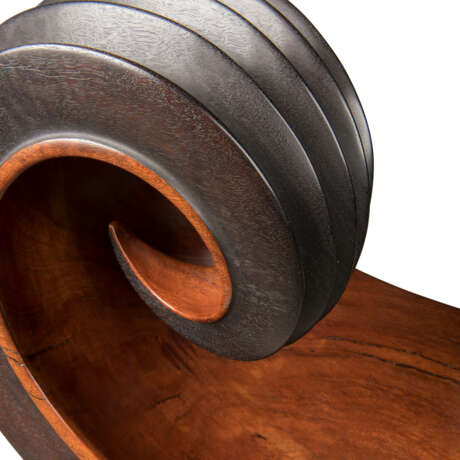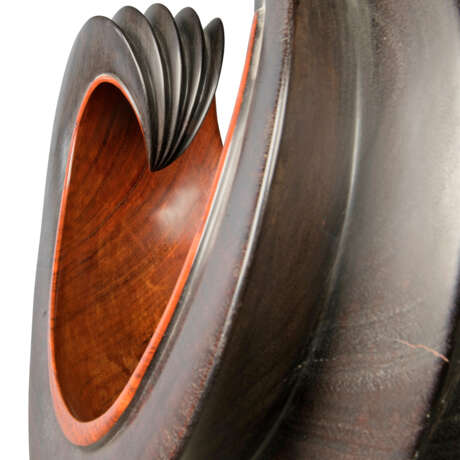ID 964899
Los 1 | Alan Watt (b. 1941)
Schätzwert
£ 700 – 1 000
Abstract Scroll
unsigned
polished and dark stained African walnut
16 ½ in. (42 cm.) high; 25 ½ in. (65 cm.) wide; 12 ½ in. (32 cm.) deep
Watt, A.
Together with an associated painted pedestal: 40 in. (102 cm.) high; 12 in. (30.5 cm.) wide; 14 in. (35.5 cm.) deep
Provenance
Acquired from the Craft Council Exhibition, Victoria and Albert Museum.
Special notice
This lot is offered without reserve.
This lot will be removed to Christie’s Park Royal. Christie’s
will inform you if the lot has been sent offsite.
Our removal and storage of the lot is subject to the terms and conditions of storage which can be found at Christies.com/storage and our fees for storage
are set out in the table below - these will apply whether the lot remains with Christie’s or is removed elsewhere.
Please call Christie’s Client Service 24 hours in advance to book a collection time at Christie’s Park Royal.
All collections from Christie’s Park Royal will be by pre-booked appointment only.
Tel: +44 (0)20 7839 9060
Email: [email protected].
If the lot remains at Christie’s it will be available for collection on any working day 9.00 am to 5.00 pm.
Lots are not available for collection at weekends.
Post lot text
ROBIN & RUPERT HAMBRO
Rupert was a close friend from my school days, but I first met Robin when she, Rupert and I went to the Rembrandt Tercentenary Exhibition in Amsterdam in 1969. She married Rupert the following year and their hospitality in London was legendary – so I was thrilled to be invited to be their son’s godfather.
When Robin first joined Christie’s, her charismatic Philadelphia can-do energy and fashion-editor’s eye for embracing tradition and modernism with creative flair were inspirational. Born Mary Robinson Boyer in Philadelphia in 1934, the daughter of Mr and Mrs Francis Boyer, her father was the Chairman of Smith Kline & French Laboratories, a pharmaceutical company. Educated at Vassar College and Columbia, she moved to New York and married the Chicago industrialist Michael Butler in 1957, a close friend and confidante of John F. Kennedy, and who later produced ‘Hair’ on Broadway. Robin was his second wife (there were to be three) and they lived together in an apartment on 3rd Avenue. Following their divorce a few years later she worked at Christian Dior in New York, handling public relations, and had an apartment that she filled with eclectic finds from her travels and modern art, including works by the Colombian artist Fernando Botero (see lot 23 for another, early, work by the artist). Her apartment was photographed for Vogue in May 1967, and in the accompanying article her skill at assembling and combining works of art was justly lauded. Very beautiful and incredibly glamourous, Robin was photographed by the leading photographers of the day including Horst P. Horst and Norman Parkinson. Robin joined Vogue as a fashion editor in 1968 and after moving to London about a year later she became the London Editor of Vogue. Shortly afterwards she became engaged to Rupert Hambro, the eldest of three sons of Jocelyn Hambro and great-grandson of Carl Joachim Hambro, who had moved from Denmark to London in 1839 and founded the banking house of C.J. Hambro. Together they lived at various London addresses including Argyll Road, The Boltons and Eaton Place, before settling finally on Ebury Street.
Their London home on Ebury Street was a hidden architectural gem: an early Georgian ‘country house’ in Mozart’s terrace, published in Architectural Digest in 1995, whose restrained façade belies the unique, bold and vibrant artistic vision of Robin and Rupert Hambro within. It was a revelation to step inside. The collection she assembled – whether at Ebury Street, Copse Farm or in Saint-Rémy – is a perfect self-portrait, weaving together all the rich strands of Robin and Rupert's dynamic and creative life together. The fashion editor’s bold eye is everywhere — both in how the works were juxtaposed, as well as how old favourites were given new life in renewed arrangements.
Robin's profound knowledge of the art world and the physical act of creation as a painter led her to constantly refresh the collection and take it in an increasingly 20th-century Modernist direction, with a particular focus on sculpture including important works by female artists – Barbara Hepworth and Emily Young, most significantly. The jewellery designer’s understanding of line and craftsmanship – she designed, created and sold a jewellery collection for Hennells of Bond Street – was also evident in her personal choice of jewels. There was an abiding love and loyalty to ‘old friends’ like painted furniture – she herself painted a collection for the celebrated French house of Jansen – and the wonderful group of Old Master drawings, which appeared in different incarnations at every move. There was also an Anglo-American ‘Nancy Lancaster’ inspired taste for blue and white porcelain and especially dogs, painted by everyone from de Dreux to Desportes, although Pekineses were the overwhelming favourites. And finally their beloved Provence, where Rupert had studied as a young man, with its sublime painterly light, North African-inspired art, opera at Aix and Les Lalanne nearby.
Their Collection bears witness to two extraordinary people — and celebrates their life-enhancing legacy.
The Earl of Halifax
| Material: | Naturholz, Nussbaum |
|---|---|
| Kunst Stil: | Moderne Kunst |
| Herkunftsort: | Nordeuropa, Europa, Vereinigtes Königreich |
| Kategorie des Auktionshauses: | Skulpturen |
| Material: | Naturholz, Nussbaum |
|---|---|
| Kunst Stil: | Moderne Kunst |
| Herkunftsort: | Nordeuropa, Europa, Vereinigtes Königreich |
| Kategorie des Auktionshauses: | Skulpturen |
| Adresse der Versteigerung |
CHRISTIE'S 8 King Street, St. James's SW1Y 6QT London Vereinigtes Königreich | |
|---|---|---|
| Vorschau |
| |
| Telefon | +44 (0)20 7839 9060 | |
| Aufgeld | see on Website | |
| Nutzungsbedingungen | Nutzungsbedingungen |
